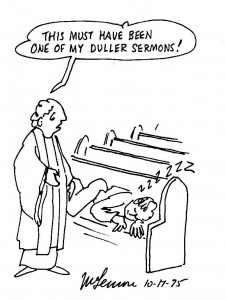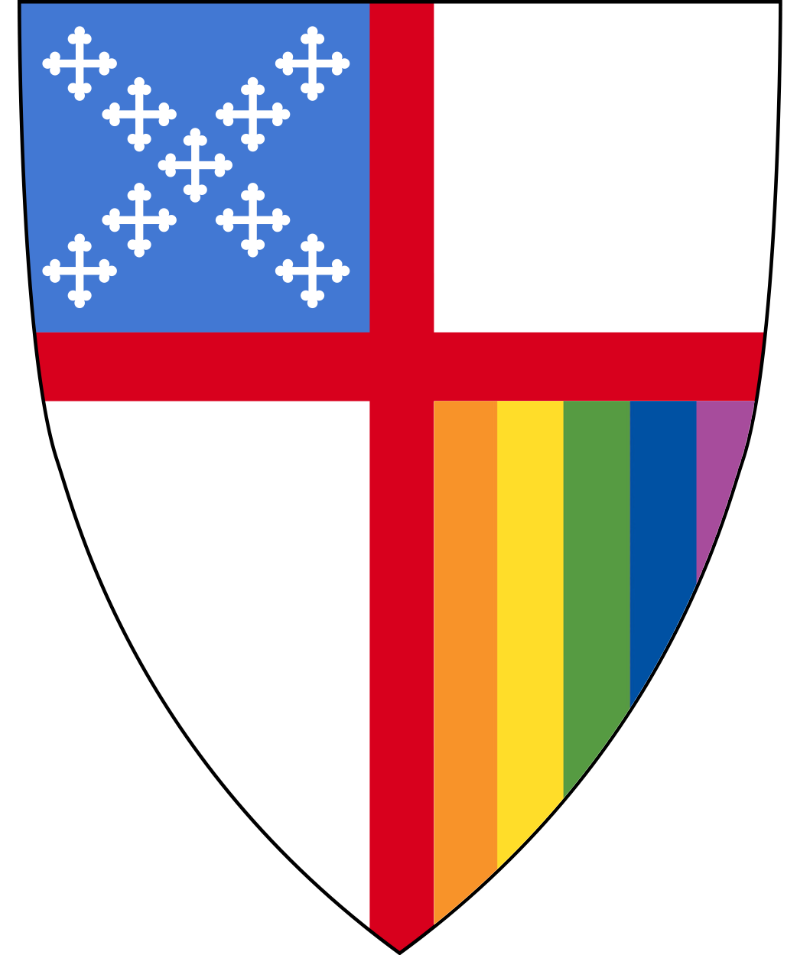Thoughts from Lori +
Today, September 9th, as I reflect and write, it is the feast day for Constance and Her Companions, “The Martyrs of Memphis.” But before I describe these women and why we remember them, I should probably explain what I mean by “feast day.”
In addition to the Sunday lectionary – that is, the three year cycle of readings for the Eucharist on Sunday morning – we also have a daily lectionary to be used for Morning and Evening Prayer. Not only that, but we also have a calendar of saints days honoring not only the traditional Saints (capital S), but also more modern saints whose lives stand as examples of the faith. Constance and Her Companions fall in somewhat recent times, that being the 19th century.
Constance and her Sisters were nuns in the Order of St. Mary, the first vowed order for women in The Episcopal Church. Their mother house is in upstate New York, with other houses in the mountains of Tennessee and in the Philippines. In 1873, Bishop Quintard of Tennessee requested that a group of Sisters from St. Mary’s come to Memphis to establish a school for girls adjacent to St. Mary’s Cathedral.
In August of 1878, the third epidemic of Yellow Fever in ten years swept through the city. Panic drove people to abandon the city, including most doctors and many clerics, leaving behind those who couldn’t afford to leave. In spite of the danger, a few brave men and women chose to stay and tend the sick. Among them were Constance, Superior of the Sisters in Memphis, six other Sisters, the Reverends Charles Parsons and Louis Schuyler, three physicians (two of whom were also Episcopal priests), and several volunteer nurses from New York.*
The Cathedral, which was located in the most infected part of Memphis, became a make-shift hospital. In the miserable heat of a Southern summer on the banks of the Mississippi, this faithful group tended the sick, comforted the dying, and provided shelter for the many orphaned children. Before the epidemic was over, the dead included Sisters Constance, Thecla, Ruth, and Frances, as well as Parsons and Schuyler. They are buried at Elmwood Cemetery. The High Altar at St. Mary’s Cathedral, Memphis, is a memorial to the four Sisters.
The Order still has a house on “the Mountain” known as Sewanee, which is also the home of The University of the South and St. Luke’s Seminary. In my own journey of faith, the Sisters and their ministry of hospitality were very important to me, including my discernment to the priesthood. In fact, one of my favorite places in the world is on that mountain. Join me in giving thanks for the ministry and sacrifice in Memphis, and for their ongoing witness even today.
Faithfully,
Lori +
*see Holy Women, Holy Men, pages 570-571 – a wonderful resource for information, prayers, and devotions.
DONALD WILLIAM MERGLER – 1919 – 2014
++ St. Paul’s lost a beloved member when Don Mergler of Cary, Illinois, passed away. He attended church with the help of his daughter, Heather Dodge, almost every Sunday, and greeted people as they came in. Don was a veteran and on September 15, 2013, made his Honor Flight to Washington D.C. through the efforts of the Veterans Network Committee.
++ On December 1, 2013, a beautiful set of Advent blue vestments and altar hangings were donated by Heather and her family in thanksgiving for Don.
++ Don had been suffering from many physical disabilities for a long time, but pushed hard to live life at it’s fullest. He was beloved and will be missed, but he’ll be a great guest at God’s heavenly banquet prepared for all of us. Rest in peace, our brother!
By The Rev. William McLemore
Dedication of Children’s Corner
September 7th
Last Sunday, we dedicated the new children’s area located just to the left as we enter the nave. Temporarily known as the Children’s Corner (name to be determined), it is something like a sacrament: an outward and visible sign… of our welcome and inclusion of children and families in our worship. Special thanks go to Bill Lang, Deb Lang, and Rick Carlstedt for making this happen.
TLS Veterans
TLS, our partners at Betts’ Place, have asked for our help. They sponsor a food truck from the Illinois Food Pantry once a month, and also keep a small food closet at their McHenry location. This local food closet needs to restock. The items most needed are listed below. Knowing of your generosity and your support of this good work, I agreed that we could help. Please pick up some of these items when you shop this week. Bring them to church on Sunday and we’ll deliver them. Thanks so much.
ITEMS NEEDED:
Mac and Cheese Spaghetti Pasta (Ziti, Rigate, Rotini, etc) Instant Potatoes Peanut Butter Tuna Fish Jelly Rice-a-Roni Stuffing (Boxed) Toilet Paper Cake Mixes Instant Coffee 1 lb packages of rice (white) Pancake MixLIVING COMPASS
At St. Paul’s
As you may remember, I attended a Living Compass (LC) training session at the end of July, and Bobbi Fiali will be attending in October. The first opportunity to experience LC here at St. Paul’s will be in November: an informal four-week course during Coffee & Conversation. “Informal” because there is no expectation to attend every session or to do anything beyond joining the discussion on Sunday morning. There are eight (8) topics from which we can choose, and I’d like your input. Brochures for the topics are mounted on a poster in the narthex. Take a look and put a check mark under one or more that might interest you. Thanks.
Lessons and Hymns Sunday, September 14th
(Pentecost XIV – Proper 19 A)
by the Rev. William P. McLemore
THE SCRIPTURE LESSONS:
The First Reading: The Track I readings are Exodus 14:19-31 and Psalm 114 or Exodus 15:1b-11, 20-21 (in place of the Psalm); the Track II readings are Genesis 50:15-21 and Psalm 103: (1-7), 8-13. Exodus tells the story of the parting of the sea. The reading from Genesis tells more about Joseph and his brothers. The Track I Psalm has nature itself reflecting the glory of God and the Exodus choice is the song of triumph as the Israelites cross the parted sea, and the Track II Psalm tells the great expanse of God loving-kindness, mercy, and nurture.
The Epistle: Romans 14:1-12. Here, St. Paul calls for forbearance and understanding among the faithful.
The Gospel: Matthew 18:21-35. In this portion of Matthew, Jesus gives instructions on dealing with forgiveness using a parable about a king dealing with his debtors.
THE HYMNS:
PROCESSIONAL HYMN: No. 390. “Praise to the Lord the Almighty.” This hymn was penned by Joachim Neander as a thanksgiving hymn and is based upon Psalm 103:1-6 and Psalm 150. The melody is from a 1665 German hymnal and current harmony from “The Chorale Book for England,” 1863.
THE SEQUENCE HYMN: No. 524. “I Love Thy Kingdom, Lord.” This hymn was authored by Dr. Timothy Dwight (1725-1817) when he was president of Yale College. It is based on Psalm 137 and has been in the Episcopal hymnals since 1826. The tune, “St. Thomas,” was composed by Aaron Williams (1731-1776) and later harmonized by Lowell Mason (1792-1872).
PRESENTATION HYMN: No. 690. “Guide Me O Thou Great Jehovah.” This hymn was written by William Williams (1717-1791) who was the chief hymn writer of Wales and one of her greatest poets. Though ordained an Anglican priest, he later withdrew from the Established Church and joined the Calvinist Methodist Connection. He composed over 800 hymns in Welsh and 100 in English. This hymn was later re-written and translated into English by another Welshman, Peter Williams, (1722-1796) a biblical scholar. The tune, “Cum Rhondda,” was composed by John Hughes (1873-1932). The hymn reflects the biblical image of God’s people on a pilgrimage, “For the Lamb in the midst of the throne will be their shepherd, and he will guide them to springs of living water.” (Revelation 7:17a)
COMMUNION HYMN: No. 379. “God is Love, Let Heaven Adore Him.” This hymn was written by Timothy Rees, the Anglican Bishop of Llandaff, a distinguished speaker in English and Welsh and respected hymnographer. This beautiful hymn covers many aspects of God’s love and is appropriate for reflecting on Chapter 13 of St. Paul’s letter to Corinth. Cyril V. Taylor composed the tune, “Abbot’s Leigh,” in May of 1941 when he was working for the Religious Broadcasting Department of the British Broadcasting Corporation (BBC).
RECESSIONAL HYMN: No. 494. “Crown Him With Many Crowns.” This hymn is an abbreviation of a longer one written by Matthew Bridges (1800-1894) published in his “Hymns of the Heart” (1851). It has been amended by several other hymn writers and greatly condensed to its present form. The tune, “Diademata,” was composed for this hymn by George J. Elvey (1816-1893) and the descant added by Richard Proulx (b. 1937-2010) of Chicago. This hymn gives voice to the wonderful incarnation of Jesus Christ fully in the human realm, “who every grief hath known that wrings the human breast, and takes and bears them for his own, that all in him may rest.”
New Mother’s Class
The St. Paul Diaper Bank is holding classes for new mothers on Thursdays from 1:00-2:30 p.m. at the McHenry Chamber Office. Classes are free and attendees will receive a package of diapers and the book, What to Expect When You’re Expecting or What to Expect the First Year. Donations for these books, new (approx. $10) or used, will be greatly appreciated. Questions? Please call the church office at 815-385-0390.
Diaper Bank
Please help out by bringing your diaper donations to church. We will also accept monetary donations. Checks should be made out to “St. Paul’s Diaper Bank.”
September 14 Servants:
Ushers: Bill Lang, Bobbi Fiali Lector: Jill Harrison Intercessor: Terry Jaworski Eucharistic Ministers: Deb Lang, Charlie Boak Vestry Person of the Day: Deb LangThe new schedule has been posted in the narthex for September 21st through December 28th.
101 Reasons to be Episcopal
Reason 72
“Christ has no hands on earth but ours. We need you to help us bless the world.”
Meg Carter, Diocese of California
From the cartoons created by the Rev. William P. McLemore
1965 – 2014.


